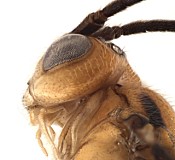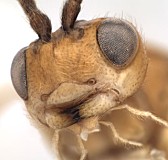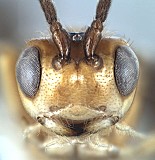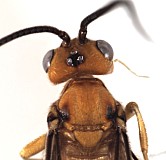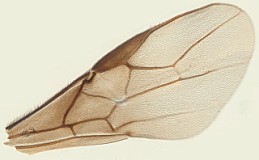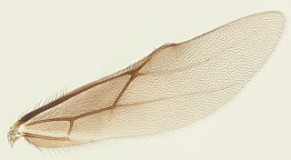Opius (Bellopius) Wharton, 1997
Bellopius is presently treated as a subgenus of Opius (Wharton 1997). The species placed here have been referred to as the Opius bellus species group and were discussed in some detail by Wharton (1983, 1988). Earlier (Fischer 1972), they were included in the genus Desmiostoma Foerster, but Wharton (1983) noted that the clypeus and labrum were quite different from the true Desmiostoma, which is a parasitoid of leaf-mining Agromyzidae. Wharton (1997) subsequently proposed the subgeneric name Bellopius for this group.
The species of Bellopius that have been reared from tephritids (including bellus and hirtus) have a median carina present on the otherwise unsculptured propodeum. Other species in this subgenus lack the carina.
The posterior margin of the pronotum is elevated in the species of Bellopius similar to the condition in Doryctobracon, suggesting that the relationship between the two should be further explored. The occipital carina is completely absent in Doryctobracon as it is in Bellopius, but the fore wing venation differs. Bellopius is unrelated to Utetes as the species of Bellopius lack both the hind tibial carina and the posterior displacement of fore wing RS+M. It is similarly difficult to show a close relationship between Psyttalia and Bellopius mainly because of differences in the clypeus and hind wing venation.
Chinajariyawong et al. provide an extensive list of opiine species and their tephritid hosts collected in Thailand and Malaysia during surveys conducted between 1986 and 1994 (Chinajariyawong et al. 2000). The specimens were primarily collected from various Bactrocera spp. and include Opius bellus Gahan. This latter record is in need of confirmation since this species is not known to occur outside the New World.

